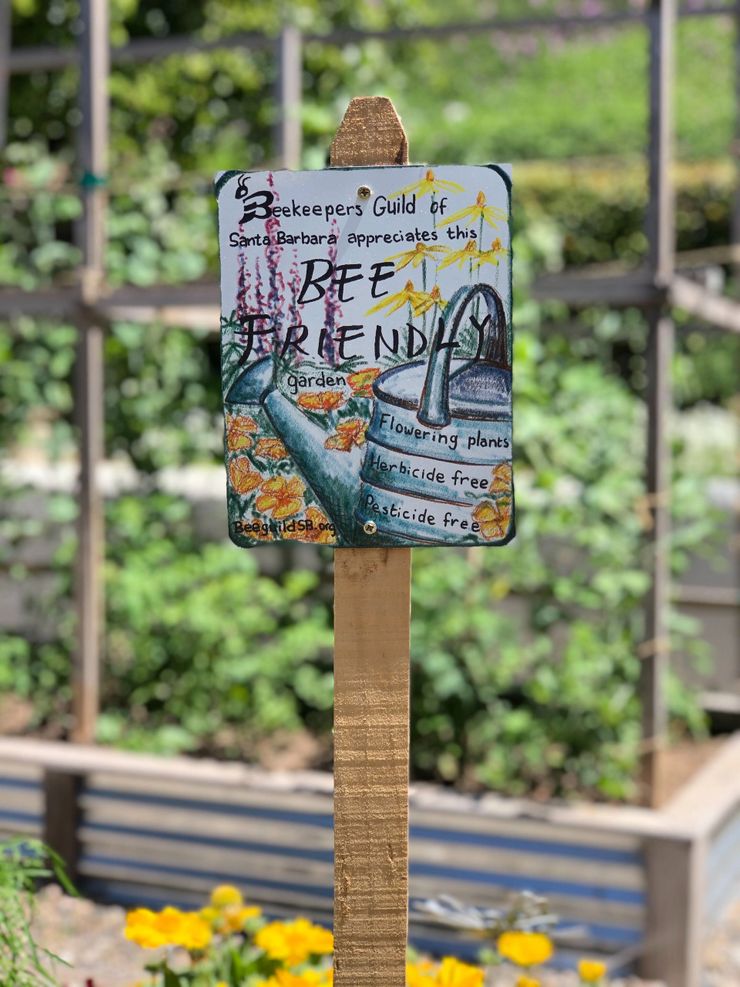Santa Barbara Beekeepers Guild Hosts a Bee-Friendly Garden Contest

Ever since 2013, the Santa Barbara Beekeepers Guild, an offshoot of the Santa Barbara Beekeepers Association, has dedicated itself to educating children about bees and other important pollinators by bringing live insects to school. The guild, which has about 85 members, both bee enthusiasts and beekeepers, also provides free bee rescues to local residents, so long as the hive in question is easy to reach. “We are not paid for that, so we take donations,” says beekeeper Ann Dusenberry. “But we refer perilous work to someone else if the hive is up high in a tree or on a building.”
Now, for the second year in a row, the guild is hosting a contest to see who can boast the most bee-friendly garden in Montecito. “We encourage people to plant gardens that are friendly to the bees and other pollinators,” Dusenberry says. “We introduced the honey bees to America, but there are so many other native pollinators and so many kinds of bees, you can just watch the parade go by.”
Many members of the guild who maintain bee colonies keep records on the health of their hives, Dusenberry says. People that keep a lot of bees register that information with the state and county. But bees are still pretty mysterious and hard to gather data about, she adds. “No one has the cure for the really bad diseases that have harmed bees, so we are still treating the disease rather than preventing it.”
Keeping bees is no easy task, Dusenberry says. “It requires stewarding with respect. You don’t go into the hive often. You leave the nursery undisturbed as much as possible. But it is our responsibility to make sure they are healthy and that other bugs don’t take over the hive,” especially beetles and ants. Thankfully, the much-dreaded Asian giant hornet, aka “The Murder Hornet,” which recently turned up in the Pacific Northwest, has not yet arrived in Montecito. “Bees can manage quite a bit on their own, but sometimes they need support from us,” says Dusenberry.
When most people think of bees, they likely imagine the common honeybee. Often overlooked is the humble bumblebee, which unlike the honeybee is a solitary insect that burrows a home underground. By virtue of its sheer size and the intensity of its buzz, the bumblebee is a much more effective pollinator than the average honeybee. “We encourage people to leave dirt patches in their garden for them to use,” Dusenberry says. “Grass is hard for bumblebees, so that’s a reason to consider a native design for your garden, since native plants do well with dirt around. Mulch is also great but if your yard is all cement or grass, they can’t live there.”
Dusenberry encourages interested participants to nominate themselves or any neighbor with a pollinator-friendly garden. “We ask them to send in photographs because we can’t go visit their gardens right now,” she says. “We review them and probably will call them to talk about the criteria: Is the garden drought-tolerant and grown without pesticides or herbicides? We would love people to plant for year-round blooms, because we have a great climate. That way, bees can stay year-round in your garden.”
The guild plans to give out ten awards. Each winner will receive a beautiful plaque painted by one of the guild’s members, Raphaela Riparetti, which makes for a perfect garden ornament.
To compete in this year’s contest or to become a guild member (the fee is just $20 per year to join), visit beeguildsb.org.







